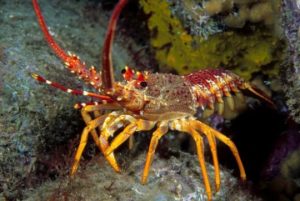Much research has gone into understanding how climate change will negatively impact oceans and different seafood species around Australia. What can we actually do about it? New research from CSIRO and the University of Tasmania suggests climate change might actually create growth opportunities for Australia’s seafood industries, if we take a holistic look at seafood supply chains.
Planning our responses to climate change does require a solid understanding of changes to the ocean and to particular seafood species. However, the full range of opportunities and threats that will confront fisheries as a result of climate change are not just at the production end of fisheries. Supply chains describe the multitude of processes and activities that connect products and services with consumers.
Let’s look at the Southern Rock Lobster as an example. In 2013, this fishery and several others in south-east Tasmania experienced a climate shock when they were forced to close in response to a toxic algal bloom. Toxic blooms are associated with warming water and changes to ocean currents. Climate change is expected to increase the ocean temperatures and cause changes to ocean currents.
Climate-related shocks can impact fisheries in many ways, obviously by affecting the quantity of seafood landed, but also by affecting how much is landed and how evenly, or how regularly, it can be supplied to market demand. Seafood industries may need to change their practices in order to maintain or enhance production. Some fisheries might experience bigger catches and need to expand their processing facilities; others might experience more variable catches and need to look at new ways to meet the demands of their markets to avoid flow on effects, like financial loss or being regarded as unreliable.
We found three points in the supply chain of the Southern Rock Lobster fishery where climate adaptations could be made: the airports, the processors, and consumers in China.

Hobart and Burnie airports are the transport hubs for the rock lobster catch and present potential bottlenecks. It might be fruitful for the fishery to explore options for alternative Australian transport hubs or alternative routes through other major cities as a means of increasing flexibility within their supply chain.
At the point of processing, the fishery has an opportunity to maintain supply of rock lobster to key markets in China by diversifying product types. Creating products that are more versatile in terms of storage, for example by converting fresh, live lobster to frozen tails, would make it possible to compensate for variability in catch due to climate-driven environmental impacts and cover times when the fishery has to shut down completely, as during an algal bloom.
Chinese are the main consumers of Tasmanian lobster, highlighting the benefits of fostering a robust and stable trade relationship with China. Our team’s research also suggests that greater collaboration between producers of different Australian seafood species who supply the same markets is another strategy to increase adaptability of seafood supply chains. In this case, collaboration between different lobster fisheries around Australia, who have an interest in supplying markets in China, could help each fishery meet market demands without interruption: enhancing the reputation of Australia as a reliable supplier.
The simple approach we have devised uses data from real supply chains of seven Australian fisheries. We provide a new and objective method for quantifying the robustness of supply chains and highlighting critical points along the path from catch to plate, looking at both economic and social consequences. Our method is similar to the approach ecologists use to analyse food webs, which describe predators and prey and how they are linked with each other. The results for each fishery point to ways of improving the adaptability of their supply chain to the kinds of external shocks expected under climate change.
A quantitative metric to identify critical elements within seafood supply networks was published on Saturday in the journal PLOS ONE.


